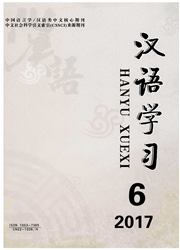

 中文摘要:
中文摘要:
立足于认知和功能分析,“坐下来”类歧义结构表示位置改变看似违背了时间顺序原则,但有功能动因,言者的表义重点和语言形式的焦点在语义上和谐,交际从而充分、得体。能够用“坐下来”表示位置改变是有其认知基础的——“范畴化”。采用什么语言形式来表示某种情景,是人的认知模式、语言交际功能及语言自身的系统性等因素共同起作用的结果。
 英文摘要:
英文摘要:
This paper focusing on the new finding that "Zuo MalaY' could mean position change, make a cognitive-functional analysis on this kind of ambiguity. The conclusion is that though using "Zuo xialai" to explain the position-change seems to violate the principle of temporal sequence (PTS), the speakers were motivated to make the key point of the expression be compatible with the semantic focus of the language structure, that the communication could be more adequate and natural which is the intention of the communication. What is more, "Zuo xialat" can be used to express the situation of position change, because it has it's cognitive basis: categorilization. Cognition of people, communicative function and the expressing system of the language all have influences on the choosing of the language forms to express a certain situation.
 同期刊论文项目
同期刊论文项目
 同项目期刊论文
同项目期刊论文
 期刊信息
期刊信息
